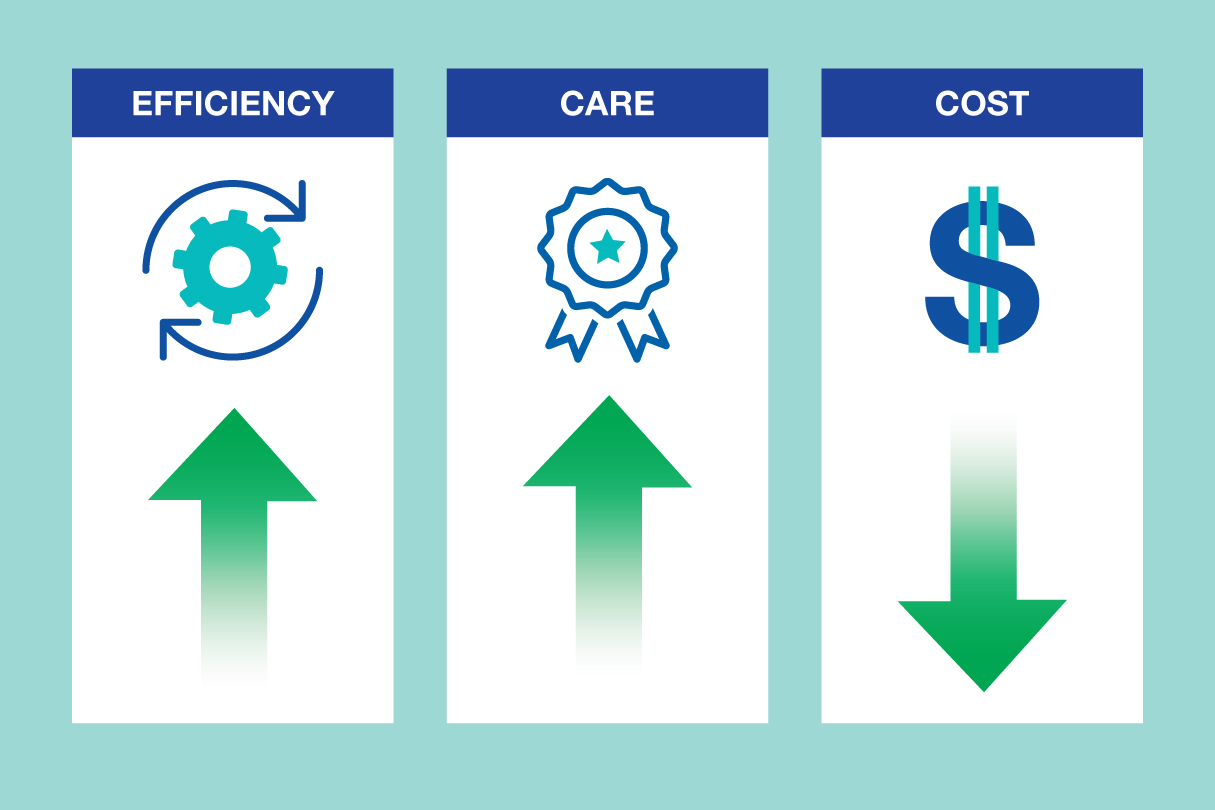
Reasons to Bring Testing
In House
Outsourcing testing to reference labs may be prudent for low-volume tests or for clinical laboratories that lack the equipment, infrastructure, or expertise to perform specific tests in house. However, performing testing in house can provide substantial strategic advantages that support operational objectives, quality standards, patient care goals, and budgetary requirements. Some of these benefits are summarized below.
Reduce Operational Costs
Outsourcing testing can be costly. Performing testing in house can significantly reduce costs and minimize inefficiencies associated with managing send-out testing. Additionally, bringing testing in house allows laboratories to leverage economies of scale that provide workflow efficiencies and cost savings. These advantages can be optimized by increasing test volumes on an individual analyzer, which maximizes bulk purchasing benefits, leading to reduced cost-per-test.
Improve Workflow Efficiency
Outsourcing testing to reference labs often requires staff to perform additional processing and administrative tasks. These include aliquoting, labeling, and packaging patient samples, as well as managing test orders and results. These tasks may divert laboratory resources away from testing processes and disrupt workflows.
Expanding in-house testing allows personnel to focus on test processing, rather than redirecting samples to reference labs. By streamlining processes, laboratories can optimize labor utilization and boost efficiency and productivity.
Improve Patient Care
Outsourcing testing requires patient samples to be transported to local, regional, or national reference labs. Sample transportation delays testing and prolongs result turnaround times, hindering a clinician’s ability to promptly diagnose patients and initiate treatments. Performing testing in house expedites result turnaround times and contributes to enhanced patient care.

How to Evaluate Which Tests to Bring In House?
Test volume thresholds are the most common method for identifying tests to be brought in house. When designated volume limits are exceeded, it is assumed that the benefits of performing testing in house will likely outweigh the costs of sending the test to a reference lab.
However, this straightforward and simple approach to evaluating send-out testing may overlook consequential variables. Volume metrics do not account for differences in send-out test costs or the true cost of implementing in-house tests, which may require capital equipment, training, and operational demands.
A more comprehensive comparison of in-house and send-out testing can be made by assessing the return on investment (ROI). By comparing the cost of performing a test in house with all of the costs associated with send-out testing, ROI measures the financial value of in-house or send-out testing. This relies on the ability to accurately assess the following clinical laboratory costs:
Send-Out Testing Costs
To determine the cost-per-test of send-out testing, it is important to consider more than just the reference lab expenses. The labor and resource costs of processing patient samples and managing reference lab test orders and results are additional substantial costs incurred when conducting send-out testing.
In-House Testing Costs
When calculating the cost-per-test for in-house testing, consider the cost of reagents, consumable supplies, and necessary equipment. Additionally, include incremental labor costs required to perform the additional testing.
In-House Testing Cost Savings
It is also important to consider how in-house testing can enhance efficiency and reduce cost-per-test. By expanding in-house testing and increasing the utilization of existing analyzers, laboratories can create economies of scale. They can increase testing volumes, optimize efficiency, and streamline resource utilization — all of which helps reduce the cost-per-test of assays performed on existing analyzers. Additionally, increasing test volumes affords laboratories with opportunities to use more efficient testing solutions that incorporate advanced automation technologies and performance capabilities. These can provide substantial reductions in operating costs.
Additional In-House Testing Considerations
While ROI offers clinical laboratories a way to quantify and compare send-out and in-house testing, it is also important to consider qualitative variables that may provide additional tangible benefits. These include testing synergies, outreach programs, quality initiatives, and clinical utility.
-
Testing Synergies
Clinical laboratories may consider adding in-house tests based on their synergy with existing testing platforms. Identifying tests that are compatible, complementary, or commonly ordered with current in-house tests allows laboratories to expand testing capabilities with minimal additional demands on laboratory resources.
Clinical Utility
Clinical laboratories may choose to bring specific tests in house to supply healthcare providers with high-value or clinically relevant results. These tests may be especially important to improve patient outcomes, reduce costly hospital stays, or support specialized medical practices.
-
Outreach Programs
Expanding in-house testing allows clinical laboratories to cater to a more diverse array of healthcare providers. By offering a broad range of testing, including specialized tests, laboratories can become a comprehensive one-stop solution for clinicians. This enhances the viability of outreach programs, diversifies revenue streams, and promotes sustainable financial growth.1
Quality Initiatives
Send-out testing requires additional patient sample handling and increases the risk of human and chain-of-custody errors, potentially leading to lost samples and testing errors. To mitigate these risks, expanding in-house testing allows clinical laboratories to take greater control of processes to ensure the most accurate and reliable test results.2
A Strategic Evaluation of Clinical Laboratory Testing
To evaluate which tests to bring in house, clinical laboratories must assess a wide range of potential benefits and costs.
Send-out testing costs comprise far more than just the reference lab expenses. Likewise, in-house testing costs include incremental labor expenses alongside the costs of equipment, reagents, and other supplies. While bringing tests in house may seem expensive and inefficient at first, laboratories can reduce cost-per-test and optimize efficiency by expanding in-house testing and maximizing economies of scale. Testing synergy, outreach, quality initiatives, and clinical utility are all additional considerations surrounding in-house testing.
By assessing these critical factors, laboratories can make informed, evidence-based decisions on which tests to outsource and which to bring in house. This is key to reducing costs, enhancing testing efficiency, and ultimately offering the best possible patient care.
References
- Clifford L (2013). Outreach Strategies for Operational Success. https://www.mlo-online.com/home/article/13004886/outreach-strategies-for-operational-success, accessed September 12, 2023.
- Zhang YV (2015). Should We Bring This Test In House? https://www.aacc.org/cln/articles/2015/june/should-we-bring-this-test-in-house, accessed September 12, 2023.




